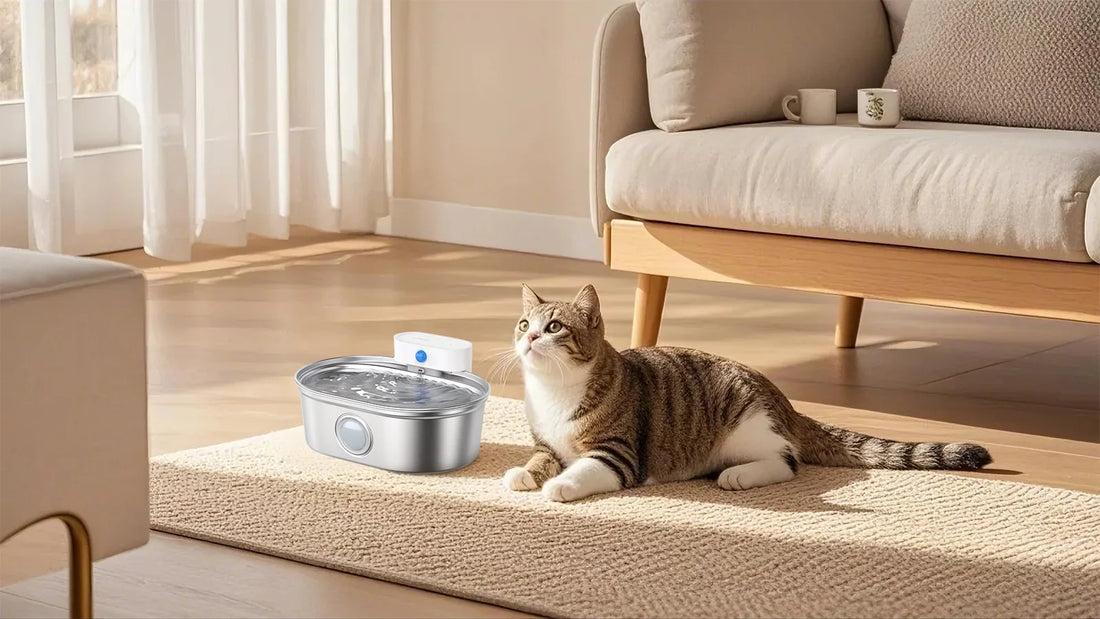If you've noticed your dog acting strangely around his food bowl, you're not alone. Many pet owners have observed their furry friends displaying signs of fear or anxiety when it comes to mealtime. This behavior can be puzzling and concerning, but understanding the underlying causes is the first step toward helping your dog feel more comfortable. In this article, we'll explore the various reasons why your dog might be afraid of his food bowl and provide actionable tips to address the issue.
Understanding Canine Anxiety
Dogs, like humans, can experience anxiety for a variety of reasons. When it comes to their food bowl, this anxiety can manifest in different ways. Some dogs may avoid the bowl altogether, while others might approach it hesitantly or even display aggressive behavior. To better understand why your dog is afraid of his food bowl, it's important to consider the following factors:
- Past Trauma: If your dog has had a negative experience related to his food bowl, such as being startled or punished while eating, he may associate the bowl with that trauma.
- Environmental Factors: Changes in the environment, such as moving to a new home or introducing new pets, can cause stress and anxiety in dogs, which may extend to their feeding routine.
- Health Issues: Pain or discomfort, particularly in the mouth or digestive system, can make eating a stressful experience for your dog.
- Bowl Material or Design: Some dogs may be sensitive to the material or design of their food bowl. For example, a metal bowl might make loud noises when moved, which can be frightening for some dogs.
Identifying the Signs of Fear
Recognizing the signs of fear in your dog is crucial for addressing the issue effectively. Common signs that your dog is afraid of his food bowl include:
- Avoidance: Your dog may refuse to go near his food bowl or may only approach it when you're not around.
- Hesitation: Your dog might take a long time to start eating or may eat very slowly.
- Physical Symptoms: Signs of stress, such as trembling, panting, or excessive drooling, may be present when your dog is near his food bowl.
- Aggressive Behavior: In some cases, fear can manifest as aggression, such as growling or snapping when approached while eating.
Practical Solutions to Help Your Dog
Once you've identified the potential causes of your dog's fear, you can take steps to help him feel more comfortable around his food bowl. Here are some practical solutions to consider:
- Change the Bowl: If you suspect that the material or design of the bowl is causing the issue, try switching to a different type of bowl. For example, a ceramic or plastic bowl might be less intimidating than a metal one.
- Create a Calm Environment: Ensure that your dog's feeding area is quiet and free from distractions. This can help reduce anxiety and make mealtime a more pleasant experience.
- Gradual Desensitization: If your dog is afraid of his food bowl, you can try gradually desensitizing him to it. Start by placing the bowl in a neutral area and allowing your dog to explore it at his own pace. Gradually move the bowl closer to his feeding area over time.
- Positive Reinforcement: Use treats and praise to create positive associations with the food bowl. For example, place treats near the bowl or inside it to encourage your dog to approach it.
- Consult a Veterinarian: If you suspect that health issues may be contributing to your dog's fear, it's important to consult a veterinarian. They can perform a thorough examination and recommend appropriate treatment options.
Preventing Future Anxiety
Preventing future anxiety around the food bowl involves creating a positive and consistent feeding routine for your dog. Here are some tips to help prevent future issues:
- Consistency: Feed your dog at the same time each day and in the same location. This can help create a sense of routine and security.
- Positive Associations: Continue to use positive reinforcement to create positive associations with the food bowl. This can include giving treats or praise when your dog approaches or eats from the bowl.
- Monitor for Changes: Keep an eye on your dog's behavior around his food bowl and address any signs of anxiety promptly. Early intervention can help prevent the issue from escalating.
- Provide Mental Stimulation: Mental stimulation, such as puzzle feeders or interactive toys, can help reduce overall anxiety and make mealtime more enjoyable for your dog.
Understanding why your dog is afraid of his food bowl is the first step toward helping him overcome this anxiety. By identifying the underlying causes and implementing practical solutions, you can create a more positive and stress-free feeding experience for your furry friend. Remember, patience and consistency are key when addressing behavioral issues in dogs. With time and effort, you can help your dog feel more comfortable and confident around his food bowl.













